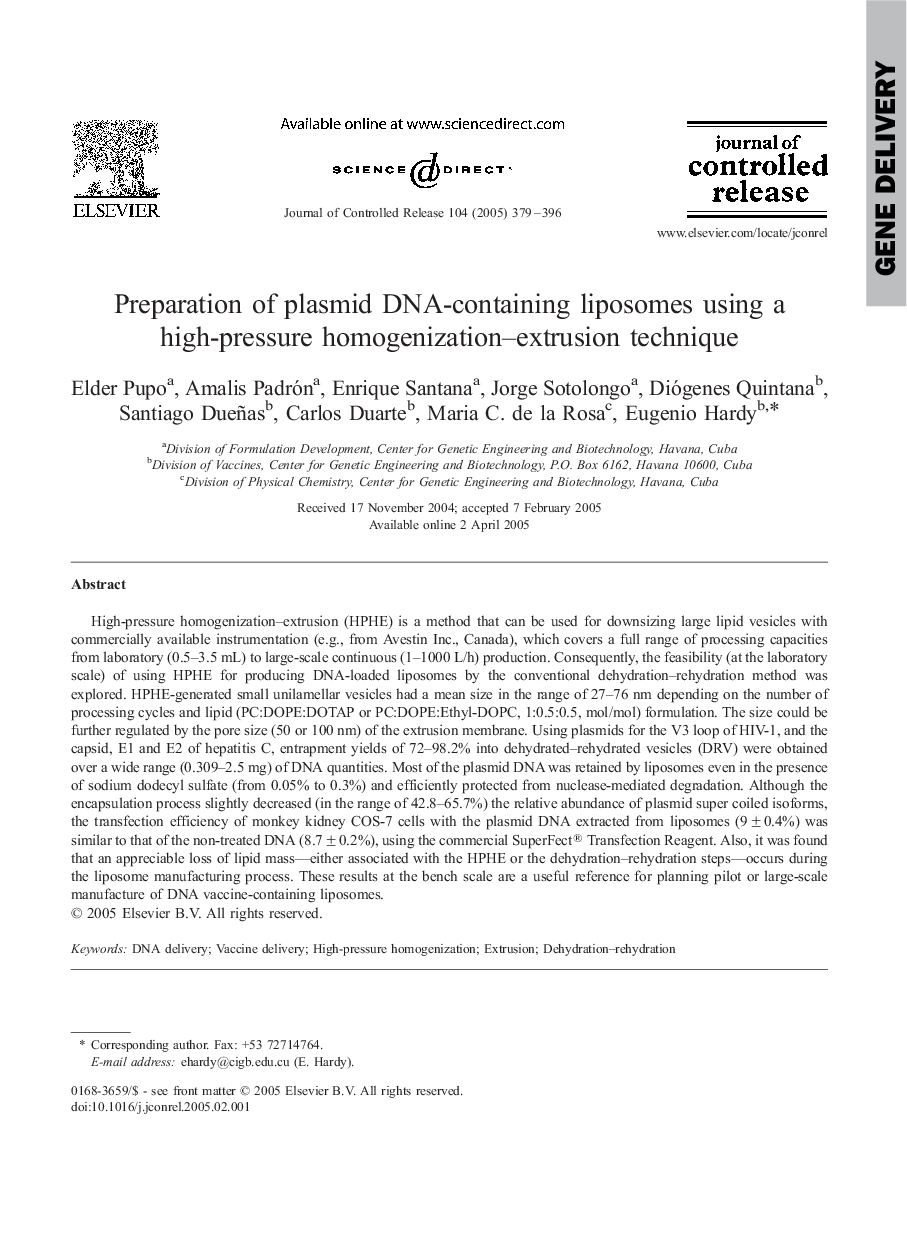| Article ID | Journal | Published Year | Pages | File Type |
|---|---|---|---|---|
| 10613514 | Journal of Controlled Release | 2005 | 18 Pages |
Abstract
High-pressure homogenization-extrusion (HPHE) is a method that can be used for downsizing large lipid vesicles with commercially available instrumentation (e.g., from Avestin Inc., Canada), which covers a full range of processing capacities from laboratory (0.5-3.5 mL) to large-scale continuous (1-1000 L/h) production. Consequently, the feasibility (at the laboratory scale) of using HPHE for producing DNA-loaded liposomes by the conventional dehydration-rehydration method was explored. HPHE-generated small unilamellar vesicles had a mean size in the range of 27-76 nm depending on the number of processing cycles and lipid (PC:DOPE:DOTAP or PC:DOPE:Ethyl-DOPC, 1:0.5:0.5, mol/mol) formulation. The size could be further regulated by the pore size (50 or 100 nm) of the extrusion membrane. Using plasmids for the V3 loop of HIV-1, and the capsid, E1 and E2 of hepatitis C, entrapment yields of 72-98.2% into dehydrated-rehydrated vesicles (DRV) were obtained over a wide range (0.309-2.5 mg) of DNA quantities. Most of the plasmid DNA was retained by liposomes even in the presence of sodium dodecyl sulfate (from 0.05% to 0.3%) and efficiently protected from nuclease-mediated degradation. Although the encapsulation process slightly decreased (in the range of 42.8-65.7%) the relative abundance of plasmid super coiled isoforms, the transfection efficiency of monkey kidney COS-7 cells with the plasmid DNA extracted from liposomes (9 ± 0.4%) was similar to that of the non-treated DNA (8.7 ± 0.2%), using the commercial SuperFect® Transfection Reagent. Also, it was found that an appreciable loss of lipid mass-either associated with the HPHE or the dehydration-rehydration steps-occurs during the liposome manufacturing process. These results at the bench scale are a useful reference for planning pilot or large-scale manufacture of DNA vaccine-containing liposomes.
Related Topics
Physical Sciences and Engineering
Materials Science
Biomaterials
Authors
Elder Pupo, Amalis Padrón, Enrique Santana, Jorge Sotolongo, Diógenes Quintana, Santiago Dueñas, Carlos Duarte, Maria C. de la Rosa, Eugenio Hardy,
